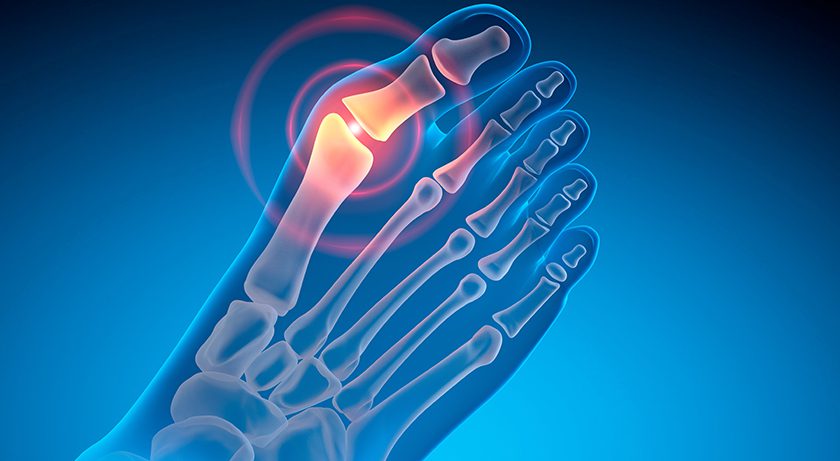

 Copy to clipboard
Copy to clipboard 
New generation enabling technology will drive growth in joint replacement by leveraging robotics, AI and big data to make tools more clinically useful, precise and efficient — benefiting surgeons and patients, said Jon Serbousek, CEO of Corin and Senior Advisor to private equity partner Permira. He believes joint replacement companies risk their competitive advantage if they don’t adopt advanced technologies and has refocused Corin’s strategy to strengthen its leadership in this space.
“This is where orthopedics is headed,” Mr. Serbousek said. “Historically, the focus has been on implants, and in the last decade, it has been on first-generation bone-cutting robots. Now, we’ve moved into a new generation of robotics, AI and objective data collection systems. We’re advancing personalized procedures with geometric alignment and gap assessments combined with joint load-controlled balancing. We’ll continue to make clinically proven implants, but this is a new era in orthopedics.”
Mr. Serbousek joined Corin in July 2023. Since then, he has helped the company complete and launch six strategic products that are expected to accelerate its growth while expanding its already robust intellectual property portfolio in digital technology advancements, procedural developments and implant design. ORTHOWORLD estimates Corin’s revenue to be $200 million.
Mr. Serbousek said the Apollo Robotic-Assisted Surgical Platform is the company’s differentiator, seamlessly gathering intraoperative objective data in a fully connected, cloud-based surgical ecosystem. This integration helps surgeons uncover insights within their case data to enhance patient outcomes. ApolloKnee launched in June 2024, and ApolloHipX will begin clinical use this quarter.
We spoke to Mr. Serbousek about how Corin’s strategy is responding to changing dynamics in the joint replacement market.
What were your top priorities upon joining the company?
Mr. Serbousek: I joined Corin at a pivotal time, just before we received 510(k) clearance for the Apollo platform and ApolloKnee application, which we launched in three major markets before the end of 2024. As a pioneer in functional implant positioning and robotic force-controlled ligament balancing, Corin has long been at the forefront of enabling technology. Apollo presented a unique opportunity to build on this legacy from the ground up and seamlessly integrate with our digital platform, CorinConnect, to create a fully connected surgical ecosystem.
During this same period, we had a particularly robust R&D pipeline spanning robotics, predictive AI models, big data capture and implant innovation. My priority was to refocus our resources on the most pressing clinical needs and accelerate the time to market. This renewed focus on our new product introduction enabled us to bring six strategic products to market in recent months: Apollo Robotic-Assisted Surgical Platform, ApolloKnee, ApolloHipX, the Icona femoral stem and two Unity Knee line extensions. All this was accomplished while the team built a multi-year new product pipeline to create future innovations.
We also strengthened our value proposition. While “Connected Orthopaedic Insight” captures our vision, it wasn’t intuitive for surgeons. We’ve embraced a new message of “Plan. Implement. Learn.” as a more accessible way to discuss the seamless integration of data and technology at every stage of the procedure — from personalized planning to precise implementation and continuous learning.
How would you describe today’s joint replacement market? What are Corin’s greatest opportunities?
Mr. Serbousek: The global joint replacement market is in a state of steady growth, with significant opportunities in outpatient procedures and personalizing patient care. As more surgeries shift to ambulatory surgery centers (ASCs), there is an increasing emphasis on efficiency and reproducible outcomes within a truly value-based care model.
At the same time, patients are seeking joint replacements earlier and have increased expectations around longevity, personalization and speed of recovery. Meeting these diverse needs will require efficient and intuitive systems that easily integrate into surgical workflows. Companies that optimize efficiency and outcomes for surgeons, patients and care models will lead the market.
The Apollo platform is well positioned to meet these demands. The compact surgical station minimizes O.R. space requirements and features software applications for personalizing knee and hip arthroplasty. ApolloKnee supports a two-tray robotic procedure, while ApolloHipX is a 3D-based direct anterior approach (DAA) total hip replacement system that minimizes intraoperative radiation exposure and requires no added instrumentation. Apollo procedures can be easily integrated into any workflow and passively send intraoperative data to Corin’s cloud-based digital ecosystem.
Learning from all this data is our next unique opportunity. CorinConnect links pre-, intra- and post-op data in an accessible surgeon portal, allowing clinicians to track patient progress, refine techniques and compare performance through customized reports. We have one of the largest and growing real-world datasets in orthopedics, and it’s turning information into action.
The CorinRegistry has contributed to over 70 journal publications since 2020, demonstrating the power of data to drive better outcomes. As demand grows for smarter, more connected surgical solutions, our ability to deliver meaningful insights at every stage of the arthroplasty journey — personalized planning, precise implementation and continuous learning — sets us apart, helping surgeons optimize reproducibility and improve patient care.
How has the market accepted the global launch of the Apollo Robotic-Assisted Surgical Platform? What differentiates these technologies from others on the market?
Mr. Serbousek: In under one year, Apollo has been used in over 1,000 procedures on three continents and has received overwhelmingly positive feedback. Early users are already leveraging CorinRegistry case reports to refine workflows for efficiency, enhance decision-making and educate their patients. With these insights feeding into our AI algorithms, we can improve patient outcomes at scale.
ApolloKnee is the first and only robotic-assisted total knee replacement procedure to provide objective pre-resection balance utilizing alignment, gap and load data throughout the joint’s full range of motion. This allows surgeons to create a personalized surgical plan before making any bone cuts. By delivering an objective, dual-compartment assessment, ApolloKnee helps reduce the need for soft tissue releases, which may contribute to quicker recovery times and more natural knee function.
Now, with the recent 510(k) clearance of ApolloHipX, we are excited to bring the same level of innovation to total hip replacement. The system is the first hip arthroplasty technology to combine dynamic 3D preoperative planning with intraoperative fluoroscopy, enabling surgeons to execute a personalized plan with greater precision and efficiency. A benefit of the technology is preoperatively simulating the patient’s unique spinopelvic mobility and biomechanics to anticipate potential challenges and optimize implant positioning.
ApolloHipX leverages a patented 2D/3D automated registration algorithm to align preoperative CT scans with intraoperative fluoroscopic images, reducing the number of images required. This not only streamlines workflow, but also improves surgical efficiency and minimizes radiation exposure in the O.R.
The Icona hip stem recently received FDA clearance. How does the stem build out your hip replacement portfolio?
Mr. Serbousek: Icona adds a collared, triple-taper design to our offerings, aligning with one of the fastest-growing stem types in total hip replacement. The system was designed with muscle-sparing approaches in mind and features a reduced lateral shoulder and swept distal tip that makes insertion easier, particularly for DAA. While optimized for DAA, Icona and ApolloHipX are highly versatile and can be used for multiple surgical approaches.
We took a data-first approach when designing Icona, analyzing over 2,600 CT scans and a statistical shape model from more than 15,000 scans in the CorinRegistry. One of the biggest takeaways? Neck height shouldn’t automatically increase with implant size. That insight shaped Icona into a stem that may look familiar but delivers a more precise fit across a broader range of patients.
For surgeons, that means less time making intraoperative adjustments and fewer cases in which femoral neck recuts are needed. For patients, it helps restore leg length, offset and range of motion to enhance overall stability. The result is an implant designed to improve predictability in the O.R. while supporting better long-term function. With single-tray instrumentation, Icona also streamlines workflows, making it an efficient choice for both hospital and ASC settings.
Corin’s commitment to enabling technology differentiates it from other mid-tier joint replacement companies. How has this dedication driven the company’s overall strategy? What challenges and opportunities has it presented as you compete in the joint replacement market?
Mr. Serbousek: What truly sets us apart is how we integrate planning, enabling and learning technologies within a fully connected ecosystem that enhances decision-making at every stage of joint replacement. The digital transformation of orthopedics is well underway, and we recognize the power of clinical data to drive continuous learning and improve outcomes. By leveraging enabling technology, AI and big data, we’re enhancing the surgical experience, refining workflows, improving procedural economics and delivering more personalized patient care.
One challenge is addressing the perception that technology might disrupt workflows or slow down surgeons. That may have taken place in the past, but new generation, fully integrated systems offer a streamlined approach. Apollo robotic-, AI- and data-driven applications are designed to fit any workflow, regardless of surgical philosophy or approach, without adding complexity. In fact, early users report high satisfaction during the initial learning curve.
The opportunity ahead is significant and involves our first-to-market solutions that address real clinical issues, create vast data sets and strong clinical outcomes. Our focus is shifting the narrative around technology in joint replacement.
New generation enabling technology will drive growth in joint replacement by leveraging robotics, AI and big data to make tools more clinically useful, precise and efficient — benefiting surgeons and patients, said Jon Serbousek, CEO of Corin and Senior Advisor to private equity partner Permira. He believes joint replacement companies risk...
New generation enabling technology will drive growth in joint replacement by leveraging robotics, AI and big data to make tools more clinically useful, precise and efficient — benefiting surgeons and patients, said Jon Serbousek, CEO of Corin and Senior Advisor to private equity partner Permira. He believes joint replacement companies risk their competitive advantage if they don’t adopt advanced technologies and has refocused Corin’s strategy to strengthen its leadership in this space.
“This is where orthopedics is headed,” Mr. Serbousek said. “Historically, the focus has been on implants, and in the last decade, it has been on first-generation bone-cutting robots. Now, we’ve moved into a new generation of robotics, AI and objective data collection systems. We’re advancing personalized procedures with geometric alignment and gap assessments combined with joint load-controlled balancing. We’ll continue to make clinically proven implants, but this is a new era in orthopedics.”
Mr. Serbousek joined Corin in July 2023. Since then, he has helped the company complete and launch six strategic products that are expected to accelerate its growth while expanding its already robust intellectual property portfolio in digital technology advancements, procedural developments and implant design. ORTHOWORLD estimates Corin’s revenue to be $200 million.
Mr. Serbousek said the Apollo Robotic-Assisted Surgical Platform is the company’s differentiator, seamlessly gathering intraoperative objective data in a fully connected, cloud-based surgical ecosystem. This integration helps surgeons uncover insights within their case data to enhance patient outcomes. ApolloKnee launched in June 2024, and ApolloHipX will begin clinical use this quarter.
We spoke to Mr. Serbousek about how Corin’s strategy is responding to changing dynamics in the joint replacement market.
What were your top priorities upon joining the company?
Mr. Serbousek: I joined Corin at a pivotal time, just before we received 510(k) clearance for the Apollo platform and ApolloKnee application, which we launched in three major markets before the end of 2024. As a pioneer in functional implant positioning and robotic force-controlled ligament balancing, Corin has long been at the forefront of enabling technology. Apollo presented a unique opportunity to build on this legacy from the ground up and seamlessly integrate with our digital platform, CorinConnect, to create a fully connected surgical ecosystem.
During this same period, we had a particularly robust R&D pipeline spanning robotics, predictive AI models, big data capture and implant innovation. My priority was to refocus our resources on the most pressing clinical needs and accelerate the time to market. This renewed focus on our new product introduction enabled us to bring six strategic products to market in recent months: Apollo Robotic-Assisted Surgical Platform, ApolloKnee, ApolloHipX, the Icona femoral stem and two Unity Knee line extensions. All this was accomplished while the team built a multi-year new product pipeline to create future innovations.
We also strengthened our value proposition. While “Connected Orthopaedic Insight” captures our vision, it wasn’t intuitive for surgeons. We’ve embraced a new message of “Plan. Implement. Learn.” as a more accessible way to discuss the seamless integration of data and technology at every stage of the procedure — from personalized planning to precise implementation and continuous learning.
How would you describe today’s joint replacement market? What are Corin’s greatest opportunities?
Mr. Serbousek: The global joint replacement market is in a state of steady growth, with significant opportunities in outpatient procedures and personalizing patient care. As more surgeries shift to ambulatory surgery centers (ASCs), there is an increasing emphasis on efficiency and reproducible outcomes within a truly value-based care model.
At the same time, patients are seeking joint replacements earlier and have increased expectations around longevity, personalization and speed of recovery. Meeting these diverse needs will require efficient and intuitive systems that easily integrate into surgical workflows. Companies that optimize efficiency and outcomes for surgeons, patients and care models will lead the market.
The Apollo platform is well positioned to meet these demands. The compact surgical station minimizes O.R. space requirements and features software applications for personalizing knee and hip arthroplasty. ApolloKnee supports a two-tray robotic procedure, while ApolloHipX is a 3D-based direct anterior approach (DAA) total hip replacement system that minimizes intraoperative radiation exposure and requires no added instrumentation. Apollo procedures can be easily integrated into any workflow and passively send intraoperative data to Corin’s cloud-based digital ecosystem.
Learning from all this data is our next unique opportunity. CorinConnect links pre-, intra- and post-op data in an accessible surgeon portal, allowing clinicians to track patient progress, refine techniques and compare performance through customized reports. We have one of the largest and growing real-world datasets in orthopedics, and it’s turning information into action.
The CorinRegistry has contributed to over 70 journal publications since 2020, demonstrating the power of data to drive better outcomes. As demand grows for smarter, more connected surgical solutions, our ability to deliver meaningful insights at every stage of the arthroplasty journey — personalized planning, precise implementation and continuous learning — sets us apart, helping surgeons optimize reproducibility and improve patient care.
How has the market accepted the global launch of the Apollo Robotic-Assisted Surgical Platform? What differentiates these technologies from others on the market?
Mr. Serbousek: In under one year, Apollo has been used in over 1,000 procedures on three continents and has received overwhelmingly positive feedback. Early users are already leveraging CorinRegistry case reports to refine workflows for efficiency, enhance decision-making and educate their patients. With these insights feeding into our AI algorithms, we can improve patient outcomes at scale.
ApolloKnee is the first and only robotic-assisted total knee replacement procedure to provide objective pre-resection balance utilizing alignment, gap and load data throughout the joint’s full range of motion. This allows surgeons to create a personalized surgical plan before making any bone cuts. By delivering an objective, dual-compartment assessment, ApolloKnee helps reduce the need for soft tissue releases, which may contribute to quicker recovery times and more natural knee function.
Now, with the recent 510(k) clearance of ApolloHipX, we are excited to bring the same level of innovation to total hip replacement. The system is the first hip arthroplasty technology to combine dynamic 3D preoperative planning with intraoperative fluoroscopy, enabling surgeons to execute a personalized plan with greater precision and efficiency. A benefit of the technology is preoperatively simulating the patient’s unique spinopelvic mobility and biomechanics to anticipate potential challenges and optimize implant positioning.
ApolloHipX leverages a patented 2D/3D automated registration algorithm to align preoperative CT scans with intraoperative fluoroscopic images, reducing the number of images required. This not only streamlines workflow, but also improves surgical efficiency and minimizes radiation exposure in the O.R.
The Icona hip stem recently received FDA clearance. How does the stem build out your hip replacement portfolio?
Mr. Serbousek: Icona adds a collared, triple-taper design to our offerings, aligning with one of the fastest-growing stem types in total hip replacement. The system was designed with muscle-sparing approaches in mind and features a reduced lateral shoulder and swept distal tip that makes insertion easier, particularly for DAA. While optimized for DAA, Icona and ApolloHipX are highly versatile and can be used for multiple surgical approaches.
We took a data-first approach when designing Icona, analyzing over 2,600 CT scans and a statistical shape model from more than 15,000 scans in the CorinRegistry. One of the biggest takeaways? Neck height shouldn’t automatically increase with implant size. That insight shaped Icona into a stem that may look familiar but delivers a more precise fit across a broader range of patients.
For surgeons, that means less time making intraoperative adjustments and fewer cases in which femoral neck recuts are needed. For patients, it helps restore leg length, offset and range of motion to enhance overall stability. The result is an implant designed to improve predictability in the O.R. while supporting better long-term function. With single-tray instrumentation, Icona also streamlines workflows, making it an efficient choice for both hospital and ASC settings.
Corin’s commitment to enabling technology differentiates it from other mid-tier joint replacement companies. How has this dedication driven the company’s overall strategy? What challenges and opportunities has it presented as you compete in the joint replacement market?
Mr. Serbousek: What truly sets us apart is how we integrate planning, enabling and learning technologies within a fully connected ecosystem that enhances decision-making at every stage of joint replacement. The digital transformation of orthopedics is well underway, and we recognize the power of clinical data to drive continuous learning and improve outcomes. By leveraging enabling technology, AI and big data, we’re enhancing the surgical experience, refining workflows, improving procedural economics and delivering more personalized patient care.
One challenge is addressing the perception that technology might disrupt workflows or slow down surgeons. That may have taken place in the past, but new generation, fully integrated systems offer a streamlined approach. Apollo robotic-, AI- and data-driven applications are designed to fit any workflow, regardless of surgical philosophy or approach, without adding complexity. In fact, early users report high satisfaction during the initial learning curve.
The opportunity ahead is significant and involves our first-to-market solutions that address real clinical issues, create vast data sets and strong clinical outcomes. Our focus is shifting the narrative around technology in joint replacement.

You are out of free articles for this month
Subscribe as a Guest for $0 and unlock a total of 5 articles per month.
You are out of five articles for this month
Subscribe as an Executive Member for access to unlimited articles, THE ORTHOPAEDIC INDUSTRY ANNUAL REPORT and more.
CL
Carolyn LaWell is ORTHOWORLD's Chief Content Officer. She joined ORTHOWORLD in 2012 to oversee its editorial and industry education. She previously served in editor roles at B2B magazines and newspapers.







